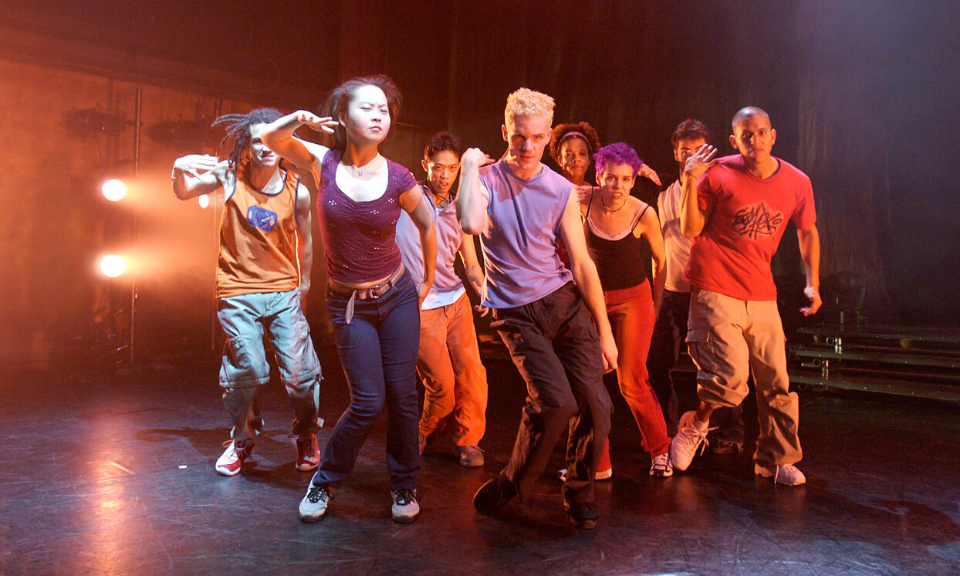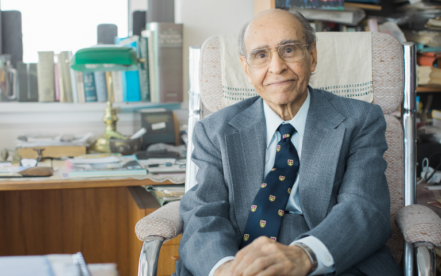Special collections, invaluable gifts: The impact donor support has made at SFU libraries

If you Google the Kelmscott Chaucer, you’ll begin to understand why it’s considered one of the most beautiful books in the world. Printed in 1896, intricate florid illustrations adorn each of its pages, breathing new and ornate life into Geoffrey Chaucer’s poems.
But Melissa Salrin, head of SFU’s special collections and rare books, knows that nothing compares to seeing it in real life.
“When you open this book and flip the pages, it sounds so amazing,” she says, noting that SFU’s copy is one of only 425 printed on paper. When Salrin showed it to a group of students on a tour, some began to tear up.
Moments like this, Salrin says, illustrate the power of SFU’s special collections library, which spans more than 40,000 books and 7,000 linear feet—about the east-to-west length of SFU’s Burnaby campus—of photographs, film reels, posters and other archival materials. Salrin calls the holdings “raw material for new knowledge and creative endeavours,” not only for research, but for powerful moments that connect us with the past.
And she’s teeming with even more stories. On one occasion, a student walked away with a newfound appreciation for her heritage after perusing the Doukhobor Collection: a series of photos, correspondence and ephemera on the radical early 20th-century Russian settlers. In a sobering moment, while browsing the SFU Library’s Japanese Canadian Blue River Road Camp Collection, another guest found a photograph of his father in a BC internment camp.
“It was gratifying to know that we could provide access to this individual so that he could better understand the experience of his father,” Salrin says.
The vast majority of SFU’s special collections come from in-kind gifts from donors. David Yorke, a retired labour lawyer and SFU alumnus based in Burnaby, is one of them.
In 2017, Yorke began donating his large personal collection of labour union history materials to SFU. The David Yorke Labour History Collection includes over 15,000 objects—dues buttons, membership pins, convention ribbons, memorial pins and textual materials such as constitutions and bylaws from the late 19th century through to 2010.
Yorke began collecting as a child, starting with buttons from his mother’s work at a fishermen’s union. What began as a modest personal collection now tells a wider story of union history from BC and beyond. The collection mainly focuses on the labour movement in the Lower Mainland, and also includes pieces from Eastern Canada, the United States, the United Kingdom and France.
“I hope that the collection serves as a witness to the labour movement,” Yorke says. “It reflects how much energy and commitment was necessary to build the unions and how much is necessary to keep them going,” he says. Salrin notes that the collection adds to the university’s existing breadth of collections in union history, bolstering SFU’s labour studies program.
Another recent and significant donation to the SFU Library is the Judith Marcuse Dance Collection. These materials document Marcuse’s career as well as the development of contemporary dance in Vancouver. Salrin’s team is busy digitizing selected posters, photographs, and other print materials from Marcuse’s donation that illustrate the Canadian contemporary dance pioneer’s 50-year career.
Salrin notes that few dance archives in Canada have been deposited in institutions and digitized—and even fewer are based in Western Canada. Material from the Marcuse fonds have already been used by instructors in SFU’s School of Contemporary Arts and a doctoral student. Digitizing the content will make it accessible for an even wider audience.
Marcuse, an adjunct professor at SFU who launched Canada’s first Master of Education in Arts for Social Change program at the university, began recording her projects in the ’70s. Although she didn’t realize the significance of her collection at the time, she’s glad that she kept record of her creative work and encourages others to do the same.
“I think it’s really important that everything is not disposable,” Marcuse says. “I’m very grateful for SFU for taking on the donation.”
Donations like Marcuse’s and Yorke’s, Salrin says, make SFU’s special collections an exciting hub for community-building. She’s honoured to be trusted with donors’ life’s work and to share them with an audience within SFU’s campus network and beyond.
“We are very delighted to share what we have and continue to build what we have thanks to the generosity of donors,” she says. “It certainly couldn’t happen without them.”
